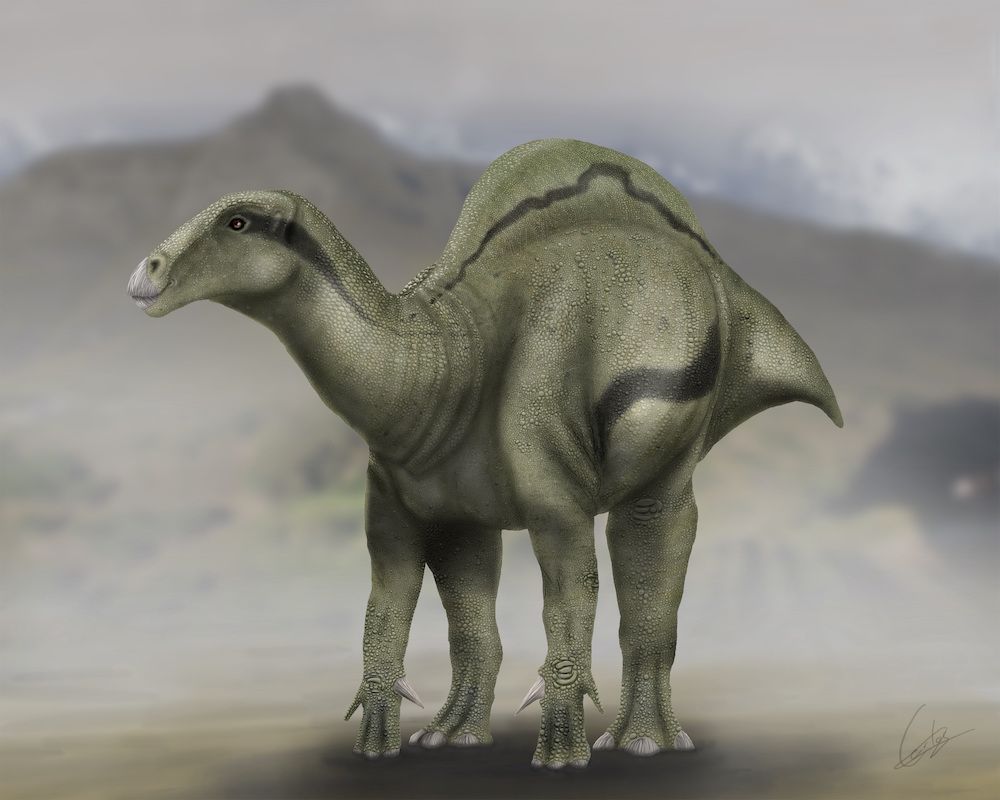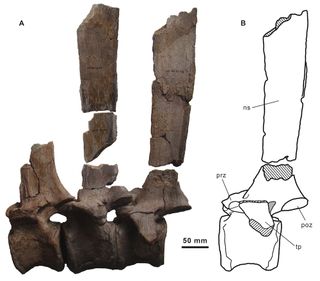Dinosaur's Curious Back Sail May Have Aided Migration

The bizarre rigid "sail" on the back of a newfound species of herbivorous dinosaur may have helped the paleo-beast survive in a variety of climates, a new study finds.
The dinosaur lived during the Early Cretaceous period about 125 million years ago in ancient Spain, the researchers said. During that time, some areas of Iberia had alternating wet and dry periods. Perhaps the dinosaur used its sail to regulate its body temperature, much like an elephant uses its large ears to release excess body heat, the researchers said.
Or, the dinosaur could have used the sail as a place to store fat to use when resources were scarce, the scientists said. [Paleo-Art: Dinosaurs Come to Life in Stunning Illustrations]
The dinosaur remains were discovered in May 2013 in a quarry near the city of Morella in northeastern Spain, said study co-author Fernando Escaso, an assistant professor for the Evolutionary Biology Group at the National Distance Education University in Madrid, Spain. Since then, Escaso and his colleagues have been excavating and examining the bones.

The researchers named the new species Morelladon beltrani, for the city where it was discovered and "odon," the Greek word for "tooth." (The dinosaur's teeth are similar in shape, but not size, to those of modern iguanas, Escaso said.) The species name honors Víctor Beltrán, for his help uncovering other fossils at the Mas de la Parreta quarry, the researchers said.
An analysis showed that M. beltrani measured 20 feet (6 meters) long from head to tail, and stood 8.2 feet (2.5 m) high at its shouldersThat makes the beast similar in size to its relative Mantellisaurus atherfieldensis, also known from the Early Cretaceous of ancient Europe, the researchers said.
M. beltrani's most defining feature is the sail, formed by tall, boney spines that attach to the vertebrae on the animal's back. The spikes were tall, measuring up to 12 inches (31 centimeters) long, according to the fossils.
Sign up for the Live Science daily newsletter now
Get the world’s most fascinating discoveries delivered straight to your inbox.
If the dinosaur migrated, using the sail as a storage place for fat would have come in handy, Escaso said. There is no direct evidence that M. beltrani migrated, but fossil discoveries show that other dinosaurs from the Mas de la Parreta quarry lived in herds. Moreover, large modern herbivores such as elephants that live in herds also migrate, Escaso said.
The study was published online today (Dec. 16) in the journal PLOS ONE.
Follow Laura Geggel on Twitter @LauraGeggel. Follow Live Science @livescience, Facebook & Google+. Original article on Live Science.

Laura is the archaeology and Life's Little Mysteries editor at Live Science. She also reports on general science, including paleontology. Her work has appeared in The New York Times, Scholastic, Popular Science and Spectrum, a site on autism research. She has won multiple awards from the Society of Professional Journalists and the Washington Newspaper Publishers Association for her reporting at a weekly newspaper near Seattle. Laura holds a bachelor's degree in English literature and psychology from Washington University in St. Louis and a master's degree in science writing from NYU.












